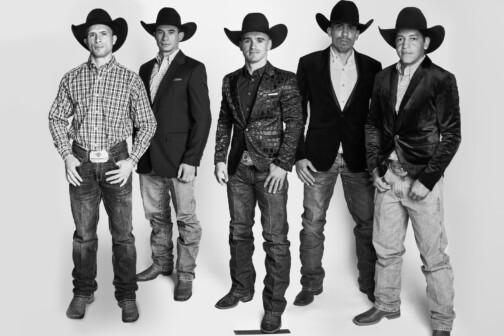“I’m sorry, but we will not be able to print your obituary.”
It was an editor at the Los Angeles Times. I had called to ask why my mother’s obit still had not appeared in the paper more than a week after I had submitted it. You would think getting a few final words published about America’s first woman rocket scientist would be easy, but such was not the case. Despite a long career that included numerous achievements in the early aerospace business, Mary Sherman Morgan’s legacy—as I was about to discover—had vanished. No one had seen fit to document her accomplishments.
“We cannot verify any of the information in your article,” the editor said. “We cannot even verify that your mother ever existed.” After pointing out that in the absence of my mother’s existence, we would not be having our conversation, I hung up.
In all fairness, the Los Angeles Times was right. In journalism, printed facts need to be verified by research before they can be published. The editor was simply following the rules. So what does one do when history has failed to record someone who deserved to be recorded? I decided my mother’s life was too significant to be forgotten. I would put her back into the aerospace record by interviewing former co-workers and collecting what little solid information was still available. And from this information I would write a play. Thus began what has become a 20-year mission to restore my mother’s lost legacy.
Mary was born to Dorothy and Michael Sherman on a small farm in Ray, North Dakota, a town of 300 people. When Mary was old enough to begin school, her father refused to enroll her, insisting he needed her help on the farm. An aunt notified a county social worker, who got the sheriff involved, and my mother was eventually allowed to attend school—three years behind her peers.
In 1940, after graduating as her high school valedictorian, Mary began college in Ohio, majoring in chemistry. Two years later, with World War II raging, she was recruited to work as a chemist in a munitions plant called Plum Brook Ordnance. This necessitated her dropping out of school. After the war, she sent out her résumé to several companies and was hired by North American Aviation in Los Angeles. They were ramping up to build the new motor of the modern age: the liquid fuel rocket engine. After only a few years at North American Aviation, she became the company’s go-to person for creating new and exotic propellants for those engines. That work had its zenith in 1958, when a fuel she invented—hydyne—was used to launch Explorer 1, America’s first satellite. Not a small accomplishment, given that out of about 900 engineers she was the only woman and one of the very few without a college degree.
A year after my phone call with the Times, I sent copies of my new play, Rocket Girl, to several major engineering universities. Only one of them responded: the California Institute of Technology in Pasadena.
“Your play and this university are a marriage made in heaven.”
It was Shirley Marneus, the legendary Caltech theater director, calling to tell me the university wanted to premiere the play. As fate would have it, I had submitted at just the right time. Caltech’s theater department was pondering switching from a Shakespeare-heavy marquee to a program geared more toward science-themed plays. It would not be the last coincidence to help promote my legacy-restoration project. Marneus mentioned that my play would be directed by their newly hired director, actor Brian Brophy (Shawshank Redemption, Star Trek: The Next Generation).
When she asked how much I wanted for a royalty, I asked her if “nothing” would be too expensive.
The play premiered in 2008—the 50th anniversary of the launch of Explorer 1. Using Rocket Girl as a springboard, Brophy and I put into motion Marneus’ goal of focusing on science-themed plays. Marrying the arts and sciences was an interdisciplinary cohesion rare at the time. As the seats filled up for most performances, everyone felt we were on the right road.
One of the plays Brophy and I developed would make an indelible mark on Pasadena and its neighbor, NASA’s Jet Propulsion Laboratory. A month after the close of Rocket Girl, Brophy asked, “Have you ever heard of Jack Parsons?” He handed me a dust-covered book he’d found lying around his new Caltech office. It was titled Strange Angel. “It’s about Jack Parsons and Frank Malina—two of the founders of JPL. I think the story would make a great play.”
I took Strange Angel home and read it over the weekend. Like my mother, Jack Parsons had led a stranger-than-fiction life. The easiest way to describe him is “rocket scientist by day, black magic occultist by night.” In his 20s, Parsons purchased a 12-bedroom home in Pasadena. For the other 11 bedrooms, he ran the following ad in a local newspaper: “Rooms for rent—$30 per month. Only bohemians, artists, anarchists, atheists, and musicians need apply. Astrologers, black magic occultists, and women of low moral character especially preferred.” More than 100 people applied. One of them was a young up-and-coming science fiction writer named L. Ron Hubbard.
Thus began a 20-year mission to restore my mother’s lost legacy.
Parsons was a follower of Aleister Crowley’s Thelema—part philosophical hedonism, part religion. With his strange gaggle of adherents and hangers-on, Parsons’ story was a writer’s dream project.
Over the next year, I wrote what would become Pasadena Babalon. I chose the British spelling of “Babylon” to ensure the title would float to the top of most search engines. The bizarre, convoluted creation story of JPL—NASA’s future Mars rover organization—would prove to be controversial to its Pasadena audience. Some loved it, some hated it. (Not everyone wants to know their history.) Even so, it succeeded in filling the auditorium seats every night.
After Babalon, I wrote one more play for Caltech, Capture the Sun, about the Pons/Fleischmann cold fusion debacle from 1989. Then I took two years off to get an MFA in screenwriting from UC Riverside’s Palm Desert writing program, administered by bestselling author Tod Goldberg. While I was in that program, Prometheus Books turned my memoir manuscript into a book: Rocket Girl: The Story of Mary Sherman Morgan, America’s First Female Rocket Scientist.
With an MFA in hand, I pondered the ageless question “Now what?” The first answer was teaching high school with the Grand Prairie Independent School District. But after a long and storied high school teaching career of one year, I retired.
The siren song of graduate school called again, and I signed up to pursue a Ph.D. at UTD. My first year of classes—all of them online due to the COVID-19 pandemic—was a blur. But by the second year, we were back to in-person instruction. One class in particular sounded worthwhile: Experimental Publishing, taught by an astronomer named Roger Malina. For me, it had just the right vibe—a creative class taught by a scientist. I briefly contemplated the possibility of a familial connection with JPL’s Frank Malina but dismissed it as too far-fetched.
During my second week of Experimental Publishing, I met with Professor Malina to chat about this and that. At some point, I mentioned the play I had written about JPL, Jack Parsons, and Frank Malina. Before I even had a chance to ask, he interjected: “Oh, yeah. Frank Malina was my father.” The weird coincidences just kept piling up.
“Your play and this university are a marriage made in heaven.”
Professor Malina asked me what I was planning for my creative dissertation, and I told him I had not yet found the right project. The next day, my sister Karen—a government healthcare worker in Southern California—called and, we ended up talking about how diabetes runs through the Morgan family. (Karen has Type 1; my father, grandmother, and I have Type 2.) She suggested I write a play about the invention of insulin and recommended a couple of books for research. It took no more than the first 20 pages of one of those books to convince me that this would be my next science-themed play.
The story is nothing short of amazing. In the pre-FDA world of early 20th-century America, two wealthy parents in New York decide to risk everything to self-fund a cure for their near-death diabetic 12-year-old daughter. A race for survival, the story culminates with the creation of the world’s first batch of artificial insulin, and the 12-year-old girl becomes its first test subject. Instead of dying at 12, she lives to 72.
UTD is well known for its emphasis on interdisciplinary studies, and I hope to continue the work I started at Caltech: finding ways to bring art and science together. Coincidences and twists of fate continue to help me along the way. One day, I received a call from the Smithsonian. One of their writers happened to see a production of Rocket Girl, and they wanted to do an article about my mother for their Air & Space Magazine.
2024 will mark the 20th anniversary of my mother’s death. And though my “lost legacy” project is coming to an end, the odd coincidences are not. A few weeks before my father passed away, I visited him. As we talked, he suddenly changed the subject.
“Hey, you know that play you wrote about JPL? I forgot to tell you. In the 1950s, when your mother worked at North American Aviation, she shared a desk for about six months with Jack Parsons.”
George D. Morgan is a Ph.D. candidate at UTD. His play about the invention of insulin, Needles, will be staged at the university sometime in the spring of 2024.
This story originally appeared in the November issue of D Magazine with the headline, “Finding Space.” Write to [email protected].







